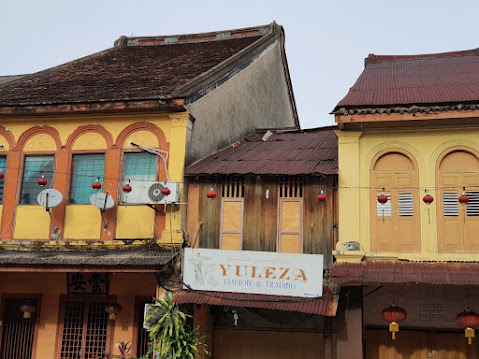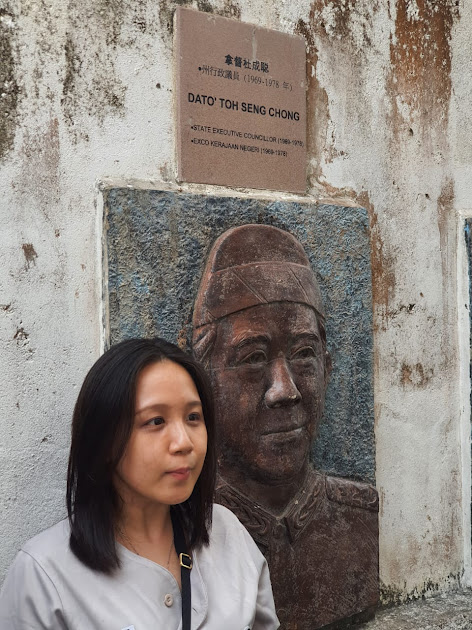12. Sociocultural Observation of China Town , Kuala Terengganu (Kuala Terengganu, Malaysia)
Sociocultural Observation of China Town , Kuala Terengganu (Kuala Terengganu, Malaysia)
At the historic heart of Kuala Terengganu- the state capital of Terengganu - is a thriving Perenakan or Chinese- Malay community centered on Kampung Cina or Chinatown. Kampung Cina literally means “Chinese Village.” Located at
the mouth of the Terengganu River, Kuala Terengganu’s Chinatown is also known
as Teng
Lang Po in Hokkien or KT’s
Chinatown.

Jalan Bandar is the main drag
of Kuala Terengganu’s Chinatown. The street was busy with vehicles and people. It is filled with different styles of shophouses, and the harmony merge of different communities with the local street culture which resulted the rich atmosphere. People did not mind to come visit again because besides culture visit, there were nice foods here too. The locals are nice, they treat outsiders like us with good manner and left nice impressions.
Shop houses architecture were introduced centuries ago in Ancient China. This types of architecture style is developed as time passed. As Chinese migrates from China to Malaysia in the early 15 century, Chinese shop house architecture has been brought to Malaysia. As cultural exchange occurred during the migration, the Chinese shop house architecture had combined with the local architecture in terms of the design in order to adapt the local climate and cultures. Different architecture styles have been shown in the picture, modernism and Chinese architecture. It shows the contrast between the modern and traditional architecture.
From the picture, we can find out few elements that can be categorized into these two architectural style. Windows is a good example. The integration of windows in the Chinese architecture on the street are traditional Chinese window which characterized by timber and pattern of design. The application of bilateral symmetry in the design of windows had been practiced in China centuries ago.
.jpeg)

Door is an important member in an architecture. It functions as a guard or protection to the owner. Besides protection, door is also an important components that will affect the "Feng Shui" of the house which are greatly concerned by the owner in the Chinese society centuries ago. This is due to "Feng Shui" are believed to change a fortune of the owner. This picture have shown a Chinese style front door. This door is located at a traditional Chinese shop house on China Street, Terengganu.
Besides that, some fantastic street art were found along our way during our exploration.
Some view of old residentials area with beautiful mixture of materials which create another kind of ambience of contrast, as well as create some kind of rusty historical feeling vibe.
Along our way to Chinatown, we found this picturesque well- colored building which draw our attentions as it situated in a well centric area with strong color composition. Creating another hotspot for tourist like us to take some classic and funky instagrammable photos.
Some other street views of the scenery during our exploration.
We even found a Chinese Mazu Temple during our trip, named Ho Ann Kiong Temple. This temple was built in year of 1801, the material of this temple was brought from China and it is the oldest and largest Chinese place for whip in Terengganu, where the architecture styles is breathtaking. With all those detailing and strong red and orange colouring it makes us want to stop and stood awhile while passing by, to appreciate such a beautiful art creation.


.jpeg)

.jpeg)



.png)


.jpeg)


.jpeg)
.jpeg)
.jpeg)





.jpeg)

.jpeg)
.jpeg)







.jpeg)

Comments
Post a Comment